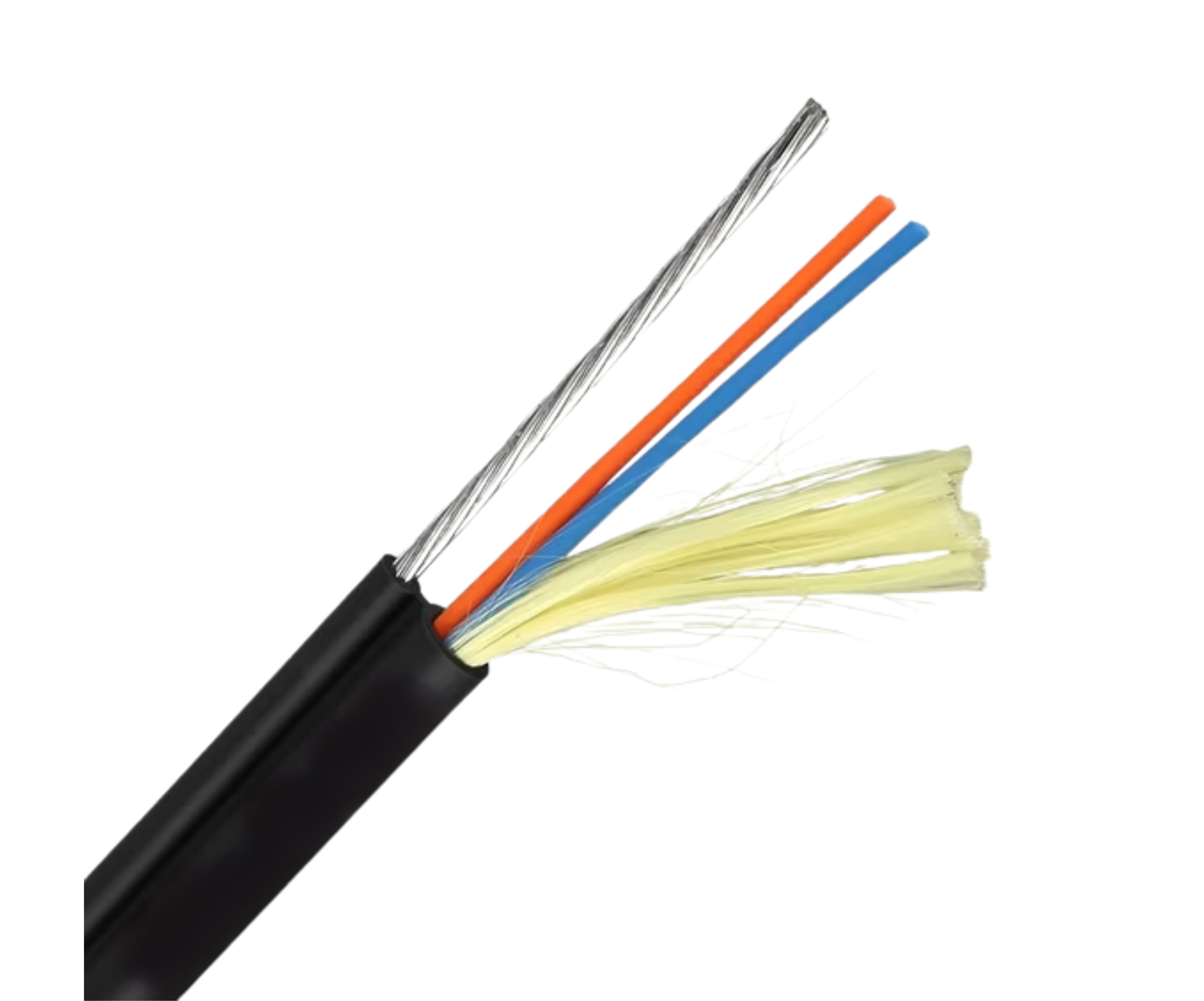

Optical Fiber Cable 6 Core Messenger
Loading variant details...
Variant Specifications
Request a Quote
Contact us for pricing details.
The 6 Core Optical Fiber Cable with
an integrated messenger wire is designed for aerial installations, providing
reliable data transmission and structural support. Below is an overview of its
key aspects:
1) Product Introduction: This cable features six optical fibers bundled within a
protective sheath, accompanied by a built-in messenger wire. The messenger
wire, typically made of galvanized steel, offers the necessary tensile strength
to support the cable during aerial installations, eliminating the need for a
separate support strand.
2) Technical Parameters:
- Fiber Type:
Single-mode or multi-mode fibers, depending on application requirements.
- Number of Fibers:
6
- Cable Construction:
Figure-8 design, integrating the messenger wire with the fiber optic
cable.
- Messenger Wire:
Galvanized steel, providing high tensile strength and stability.
- Outer Sheath Material: High-Density Polyethylene (HDPE) or Medium-Density
Polyethylene (MDPE), offering UV resistance and protection against environmental
factors.
- Operating Temperature Range: Typically from -40°C to +85°C, suitable for various
climatic conditions.
3) Key Features:
- Self-Supporting Design: The integrated messenger wire allows for
straightforward aerial installation without additional support
structures.
- Durable Construction:
The robust outer sheath and galvanized steel messenger wire ensure the
cable withstands environmental stresses, including wind and ice loading.
- Efficient Data Transmission: Low attenuation rates facilitate high-speed data
transfer over long distances.
4) Product Advantages:
- Cost-Effective Installation: The figure-8 design reduces installation time and
costs by combining the support messenger and fiber optic cable into a single
unit.
- Versatility:
Suitable for various applications, including telecommunications, cable
television, and broadband networks.
- Long Service Life:
Materials like HDPE and galvanized steel enhance the cable's durability,
ensuring a lifespan of up to 30 years.
This 6 Core Optical Fiber Cable with an integrated messenger wire is an excellent choice for aerial installations requiring reliable, high-speed data transmission combined with structural integrity and ease of installation.
Product Overview of Optical Fiber Cable 6 Core
Messenger:
An optical fiber cable with a
messenger typically refers to a type of cable used in telecommunications and
networking applications. Let's break down what each component means:
1. Optical
Fiber Cable: This
is a type of cable that contains one or more optical fibers, which are thin
strands of glass or plastic that can carry digital information in the form of
light pulses. These cables are used to transmit data over long distances at
high speeds, making them crucial in modern telecommunications networks.
2. 6
Core: The "6
core" designation refers to the number of optical fibers contained within
the cable. In this case, the cable has six individual optical fibers, each
capable of carrying separate data streams.
3. Messenger: The messenger is a component of the
cable designed to provide additional support and strength. It typically
consists of a metal wire or strand running along the length of the cable,
providing support for aerial installations where the cable needs to be
suspended between poles or other structures. The messenger helps prevent the
cable from sagging or stretching under its own weight or environmental
stresses.
Customer Questions & Answers
Have a question? Ask it here!
Customer Questions & Answers
Login to ask a question.
Related Products
Our Partners







Secure Payment By

